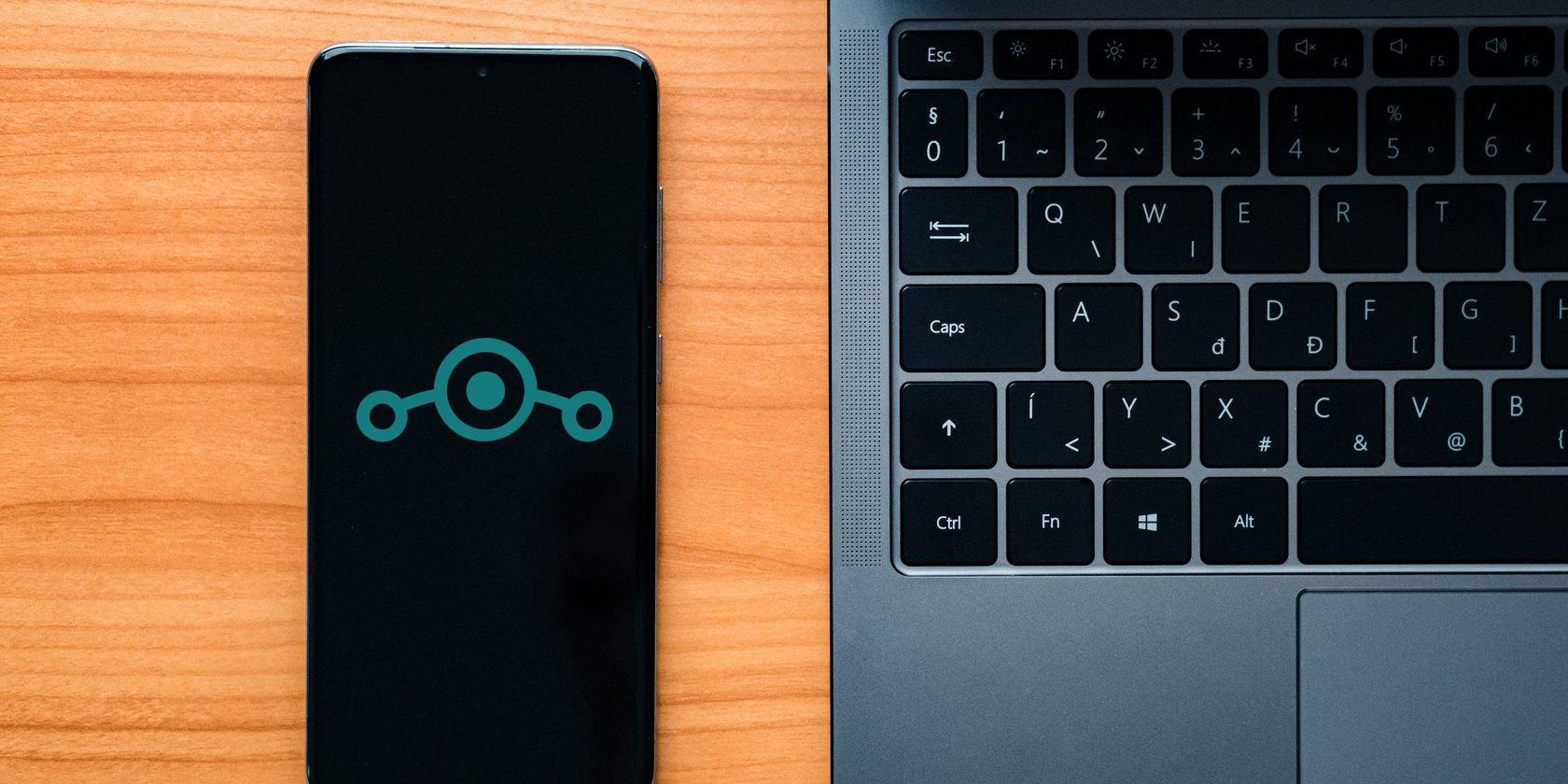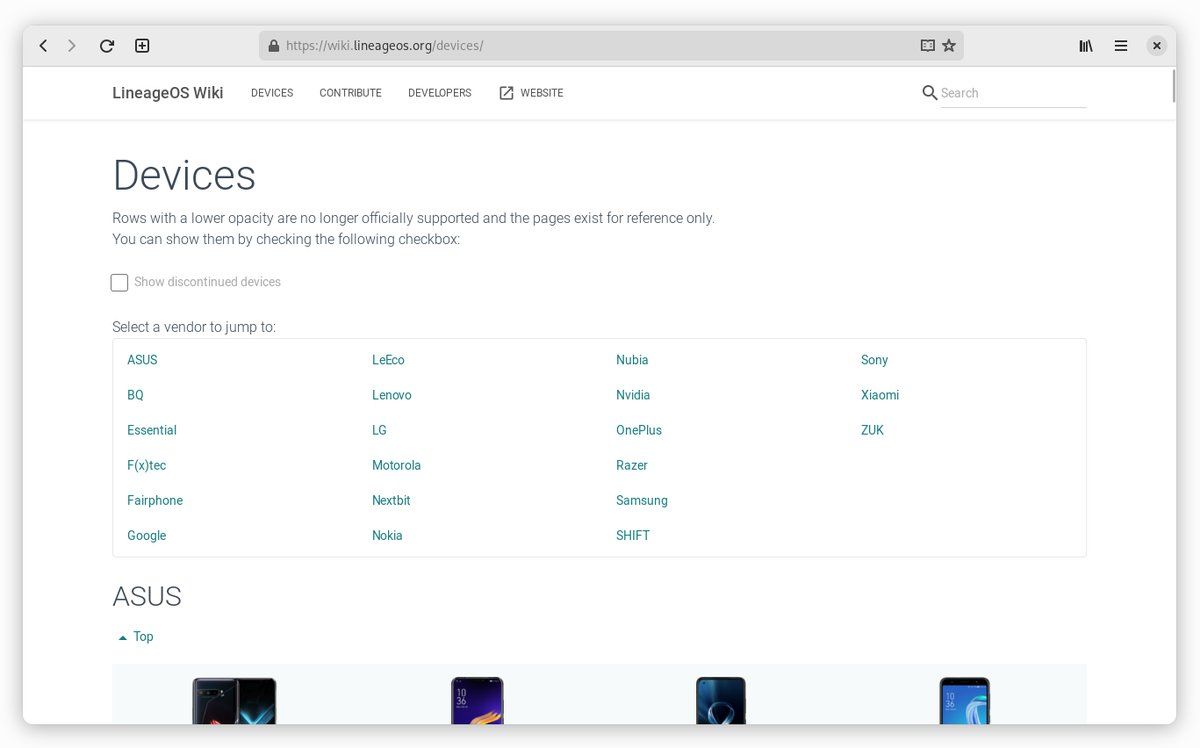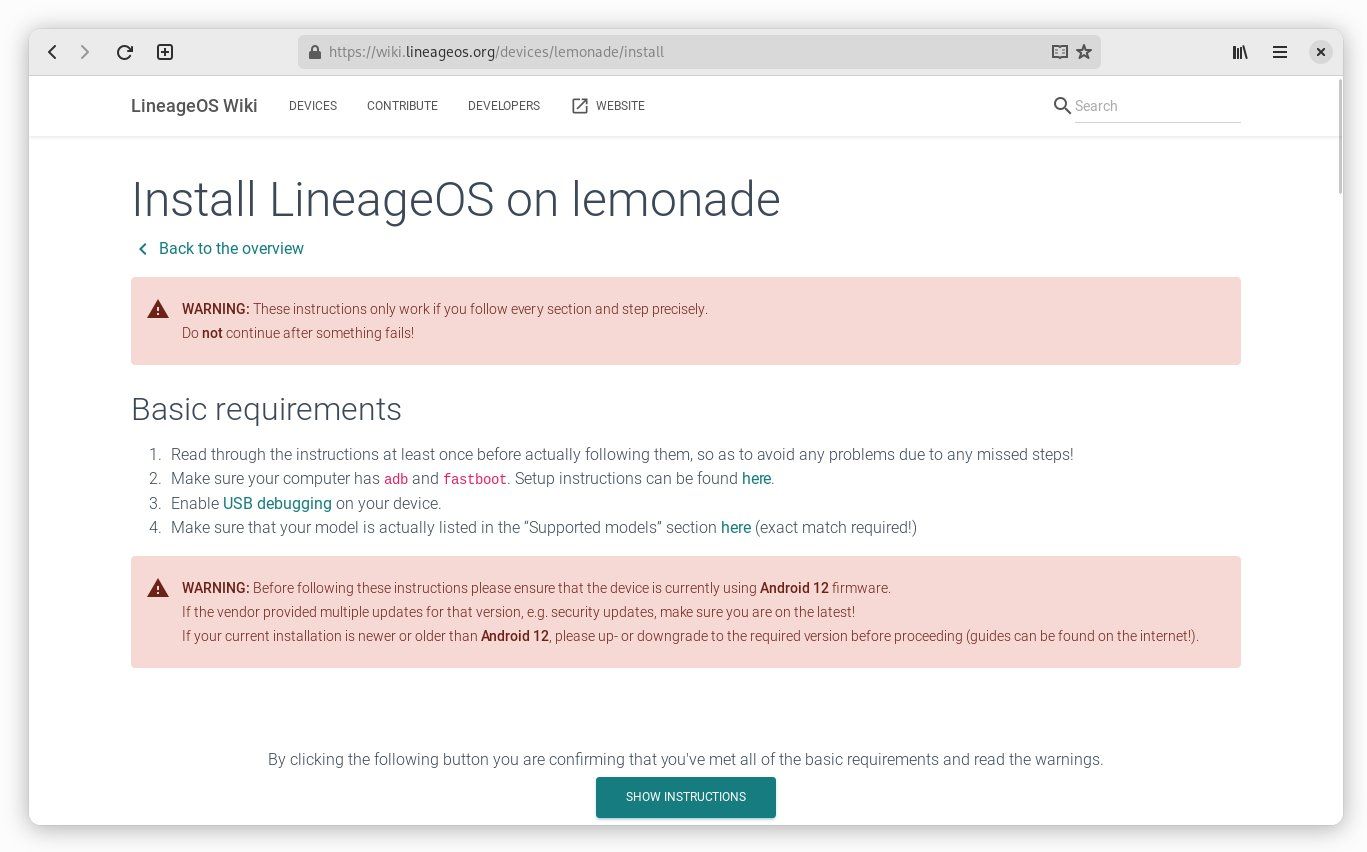Many people think of LineageOS as an option to extend the life of their current phone. It serves as a backup option for when their phone stops receiving updates from the manufacturer.
But there are many pros to using LineageOS in its own right. So what do you do if you prefer LineageOS to stock Android but need a new phone? This is the guide for you.
Decide What You Want in a Phone
You can't simply walk into a store, or even head to a website, and order a phone that comes with LineageOS. You will have to install the software yourself. This means you need to give some thought to what you need in a phone so that you can find a compatible device that meets your needs.
There are also many types of phones these days. Do you prefer a smaller phone? The bigger, the better? Do you want a stylus? Or, at the end of the day, does it simply come down to cost?
Then there are the specs. Don’t follow the marketing or even tech reviews. If you generally use budget phones, and they’ve always been fast enough for your needs, then continue to look at budget phones. A super high-resolution display looks nice, but it can also drain your battery more quickly and requires a faster processor. Have you ever in your life used NFC, and is wireless charging worth paying extra for?
This advice pertains to shopping for any phone, but it’s especially important to know what you want beforehand when looking for a device to run LineageOS. That’s because LineageOS isn’t available for most hardware, so you can’t simply buy any phone and expect there to be support. You’re going to have to search for what you’re looking for in the list of supported devices.
Check the Supported Devices List
LineageOS provides a list of devices that the project currently supports, plus models that were supported in the past. The list is broken down by manufacturer, and the devices aren’t listed in any obvious order.
When you click on a device, you get a picture, the specs, and the exact model numbers. There is plenty of information here for you to get a general feel for which options may work for you. Look through this information to find phones that fit your criteria. Do you want a large battery? Looking for a camera that can capture more megapixels? Want a phone that’s more narrow than your current one? LineageOS provides exact dimensions for each supported device.
As you narrow down your options, here are some of the key sections to look for:
- Released: This lists a device's release date, which helps you gauge if you can buy a device new or whether you will need to look for a used model.
- Current Version: This shows the latest version of LineageOS and Android available for the device. Since the latest release of LineageOS doesn't roll out to all devices simultaneously, some models may still be stuck on the previous release. An update could take months, or it may not come at all. If you’re buying a device to put LineageOS on, you might as well get one that’s already on the latest version.
- Supported Models: LineageOS technically doesn’t support entire product lines, such as the Motorola Edge. Instead, you need the phone's exact model number listed on the LineageOS device page (for example, one supported model of the Motorola Edge is XT2063-2). This is because there are often various carrier models or other variants that aren’t supported.
Once you've settled on a device, it's time to start shopping.
Get Ready to Purchase a Phone
Most people simply head to the nearest carrier store and see what options are available. But if you’re looking to use a custom ROM, this is not the approach to take. These phones are often locked to the carrier. This introduces headaches that you sometimes can't overcome.
To avoid such setbacks, here's what you want to do.
1. Buy an Unlocked Phone
Your best bet is to save yourself the hassle and buy a phone that isn’t locked to a carrier. Buying an unlocked phone is like buying a computer. You’re free to tinker with the device as you wish. This is a freedom you need to unlock the bootloader (which is different from unlocking from a carrier), a necessary step before you can install LineageOS onto your device.
This usually means paying full price for a phone, rather than offering a carrier a monthly payment. In the long run, this is often cheaper even if it means paying more upfront. If financing is an issue, there are other ways to finance your phone purchase than through a carrier.
2. Consider a Used Phone
You can save even more money by going for a pre-owned device. Depending on which phone you’re looking for, this may be your only option. On one hand, this is the beauty of choosing LineageOS over stock Android. You’re more free from the planned obsolescence of each device.
If you prefer the design of older phones, you have the option to continue using them—not indefinitely, though, since Google eventually makes changes to Android that the LineageOS developers can no longer adapt to older hardware. Still, that might be several years down the road. You could feasibly buy a used device and see a longer support period from LineageOS than you would get buying a new phone from a carrier.
3. Confirm the Model Number
Depending on where you're shopping online, you can often search for your phone by using the exact model number that LineageOS supports, rather than searching for the product name. If this doesn't work, once you open a phone's page on the site, see if you can search for the model number in the description by hitting Ctrl-F and typing in the number.
Sometimes you may have to visit the phone's page on the manufacturer's website to find specific information. Whatever you do, make sure you do not rush this step. If you manage to unlock the bootloader but fail to install LineageOS because you've purchased an unsupported model, unless you can successfully revert your phone back to stock Android, you cannot return the device.
Follow the Installation Instructions Exactly
Once you have your phone in hand, it’s time to go about the work of installing LineageOS. This process requires technical knowledge, but since you’ve done your research ahead of time, you’re much less likely to run into issues. The installation instructions on the LineageOS website provide steps that have been verified to work on the models listed. Be sure to follow them exactly, as any mistake can cause you to start over or, far worse, brick your device.
The tricky part can sometimes be installing the necessary tools on your computer for interacting with Android devices. You need the Android SDK, specifically the ability to run the commands ADB and Fastboot.
This is something you can download and test out using your current Android phone. If you have ADB and Fastboot functioning on your computer, and you’re familiar with how they work, you’re much less likely to have difficulties following the LineageOS installation instructions.
Should You Buy a Phone for LineageOS?
Unfortunately, with the substantial changes that have gone into newer versions of Android, many older devices are not able to make the leap. Plus some manufacturers have opted to further lock down their devices or use hardware that is harder for volunteers to support.
This means there’s less chance your existing phone has LineageOS support. Likewise, you can’t assume your next phone will get LineageOS support someday either. If you like custom ROMs, the safe bet is to see what’s already supported and go from there.



